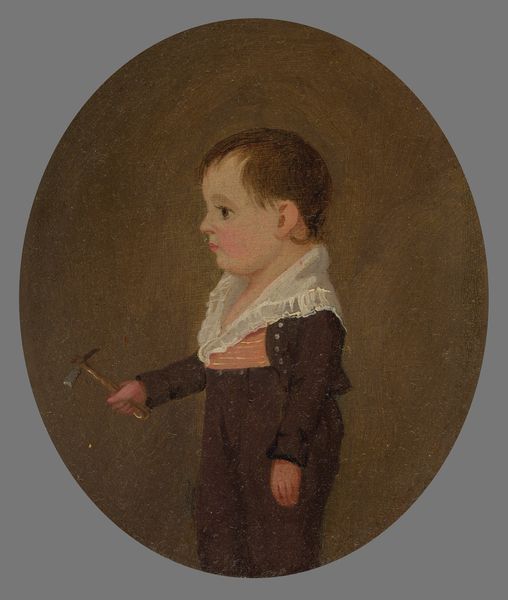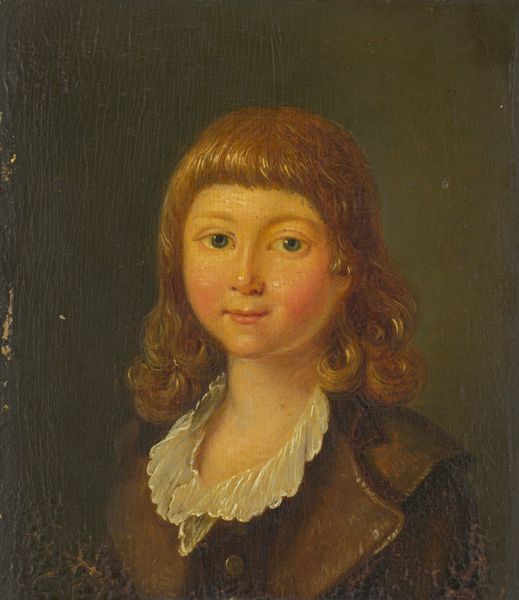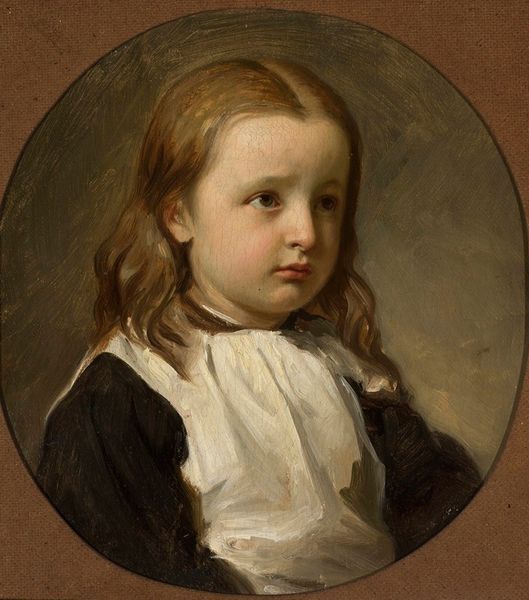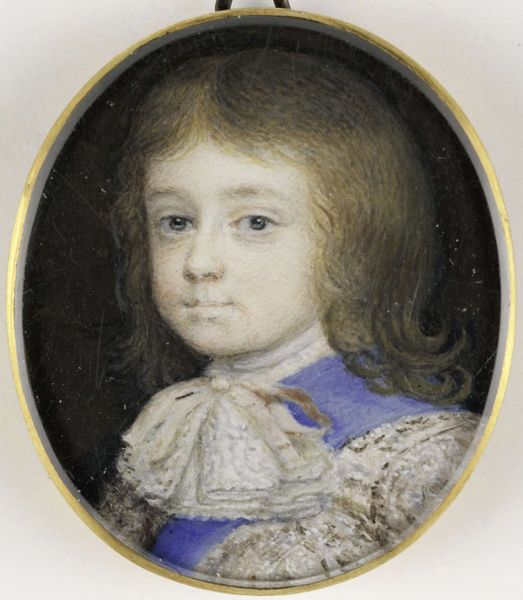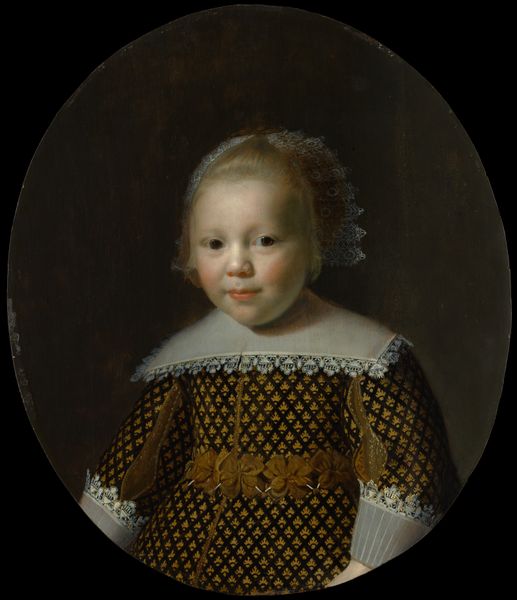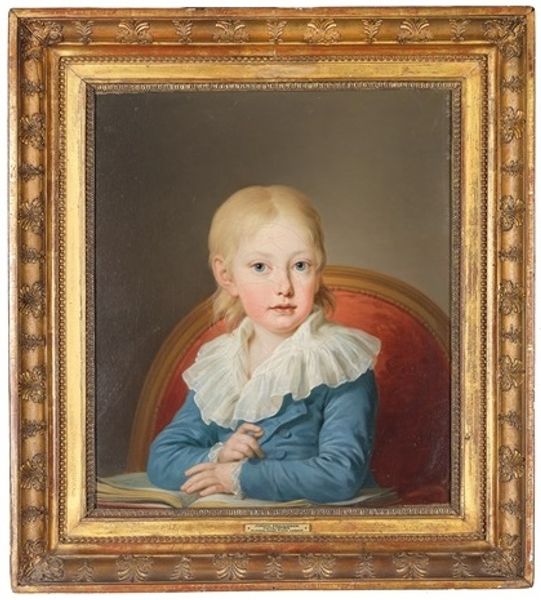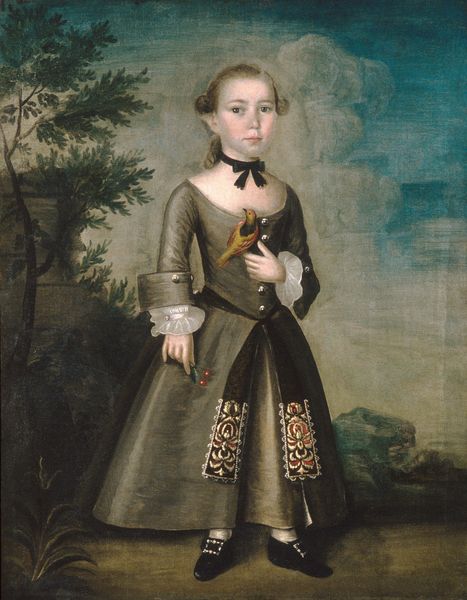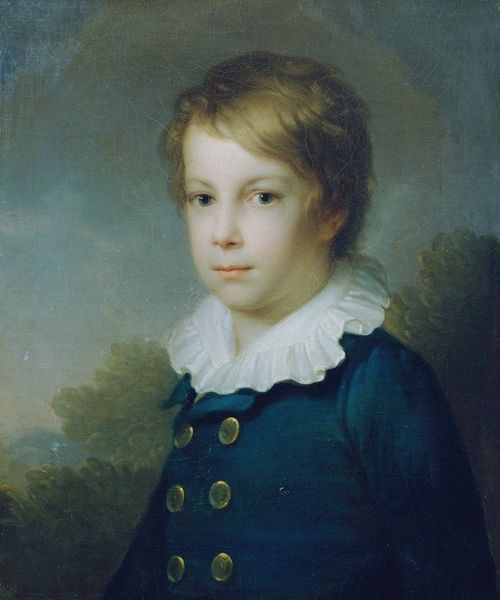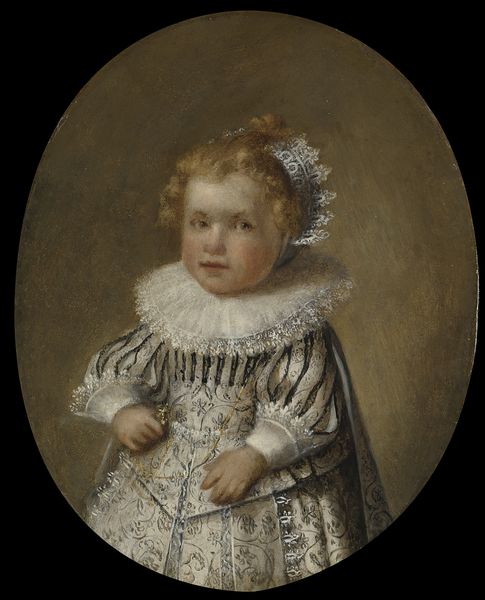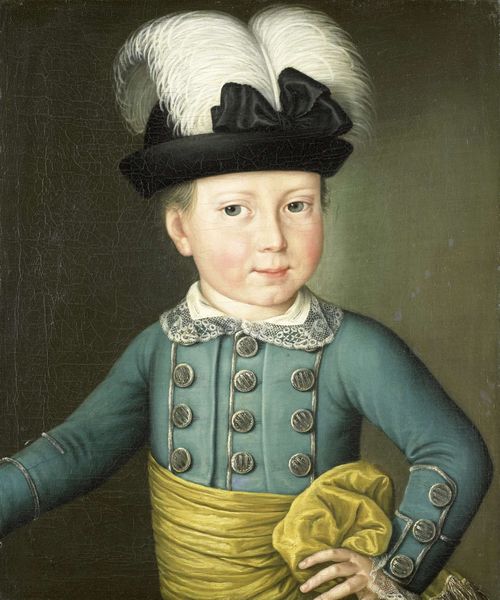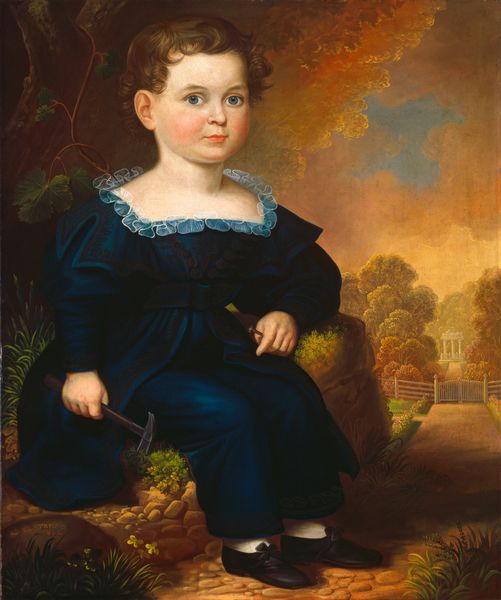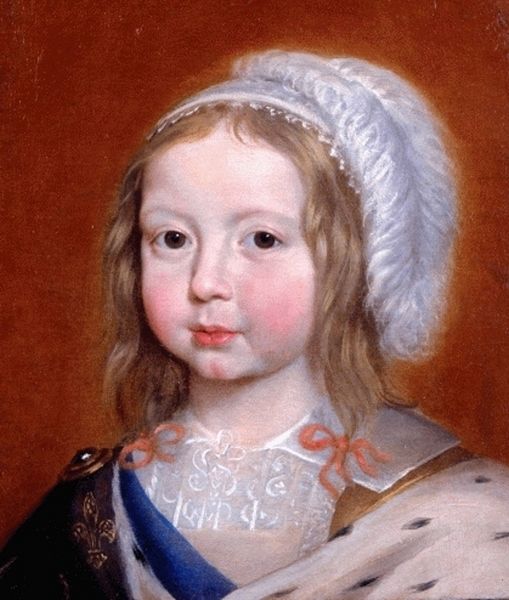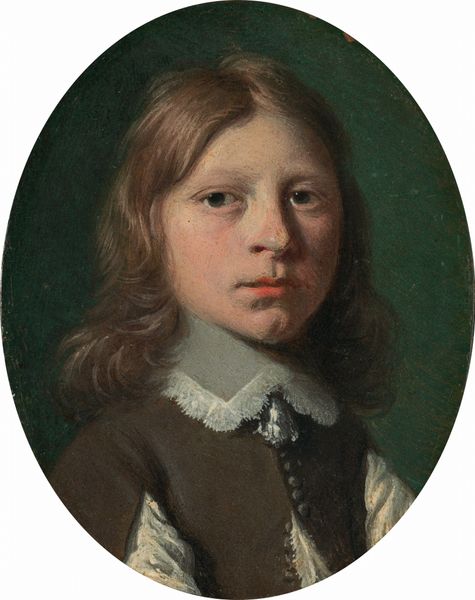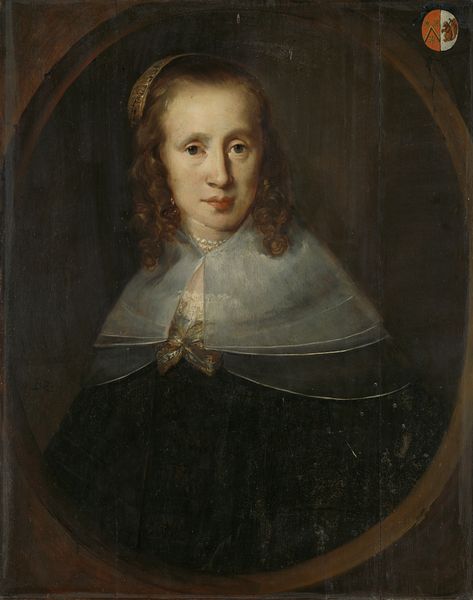
painting, oil-paint
#
portrait
#
neoclacissism
#
painting
#
oil-paint
#
academic-art
Dimensions: overall: 76.2 x 63.5 cm (30 x 25 in.) framed: 81.9 x 69.2 x 3.1 cm (32 1/4 x 27 1/4 x 1 1/4 in.)
Copyright: National Gallery of Art: CC0 1.0
Curator: Looking at this oil painting from 1795 by William Jennys, one immediately senses a kind of subdued domesticity. Editor: The innocence, certainly—that direct gaze is almost unnerving, isn't it? There's something symbolic about isolating him in this oval composition. Curator: This is “Everard Benjamin”, and it embodies Neoclassical aesthetics even through a provincial lens. Think about how Jennys was self-taught; there’s no academic polish here, but real materiality to consider. It’s likely the product of someone fulfilling local needs with available materials. Editor: I notice the contrast between his somber jacket and delicate lace collar, which is a classic symbol of youth and purity juxtaposed with early signs of masculine presentation. Perhaps, that combination reflects societal expectations of the boy as an individual—someone straddling the worlds of innocence and emerging responsibility. Curator: You can almost imagine the homespun fabric of the boy's garment—it suggests an entire network of local production and labor. How many hands would have been involved, even just in creating the pigment for the oil paints? Editor: Exactly! Colors themselves always have significance. The golden glow radiating from behind the child reminds me of halos in religious painting. Are we meant to elevate him? To see in him some hope? Curator: The context would offer answers here; we might investigate the artist’s patronage in terms of the specific needs and tastes that enabled the work itself. But, really, my thoughts return to the roughhewn reality: this wasn't painted at some court, but almost certainly in a modest home. Editor: It’s compelling how even simple portraiture encodes potent cultural information, wouldn't you say? We often ignore their rich symbolic values when thinking about portraits. Curator: Precisely—by considering labor and social context, we can interpret what could be mistaken for an unpretentious portrait in far deeper and intricate way. Editor: Yes, that simple object has become a potent visual narrative of person and his place within history.
Comments
No comments
Be the first to comment and join the conversation on the ultimate creative platform.
